June started off dry and warm, with some very hot spells of over 25 C on several days. There was some rain towards the end of the month, a few of the showers being quite heavy. This provided the plants with enough water to keep them alive and avoid them shrivelling and dying in the heat. This June has been one of the hottest on record according to the weather reports in the media. The dry, shaded pathways in the cemetery provided some cooler and welcome relief from the heat of Spring Bank West for the human visitors, and the cemetery wildlife seemed to be carrying on as normal.
Birds

I mentioned seeing Bullfinches in my report last month. I’m delighted to say that I saw both the male and female on several occasions throughout the month, sometimes together and sometimes separate. I saw the male more often than the female, suggesting she might have been sitting on some eggs, or brooding some chicks. When she’s doing this, the male gathers seeds in a pouch in the bottom of his mouth and carries them back to the nest to feed her. The photo at the top of the report is the female – her subdued colours help to camouflage her when she’s on the nest. It turned out that I was right about them being a breeding pair because I did catch a brief glimpse of a young fledgling, possibly two. They lack any of the parent’s colours, being mainly brown.
There are other fledglings around too, including Blackbirds, Chaffinches and Great Tits.

You can tell this is a young bird because the yellow gape at the side of the beak is still visible. Also the feathers are a very pale lemon yellow, and its legs are pale blue. The adult bird’s legs tend to be a darker grey colour.
I caught a brief glimpse of a Sparrowhawk chasing a Wood Pigeon and another brief glimpse of a male Blackcap. However, I didn’t see any other unusual or rarer birds than the species I usually see in the cemetery. I still heard the occasional Chiffchaff calling, and other birds were calling and singing too, but nowhere near as loud and as frequent as last month. The nesting season is well underway, making the need to sing to attract a mate and mark out territory less important.
Insects
Butterflies
It’s been a very quiet month for butterflies, and the only species I saw were Holly Blue, Large White, Small White and Speckled Wood. I also caught a brief glimpse of a bright orange one but it was a fast flier that didn’t land so I couldn’t confirm its identity although it was most probably a Comma.
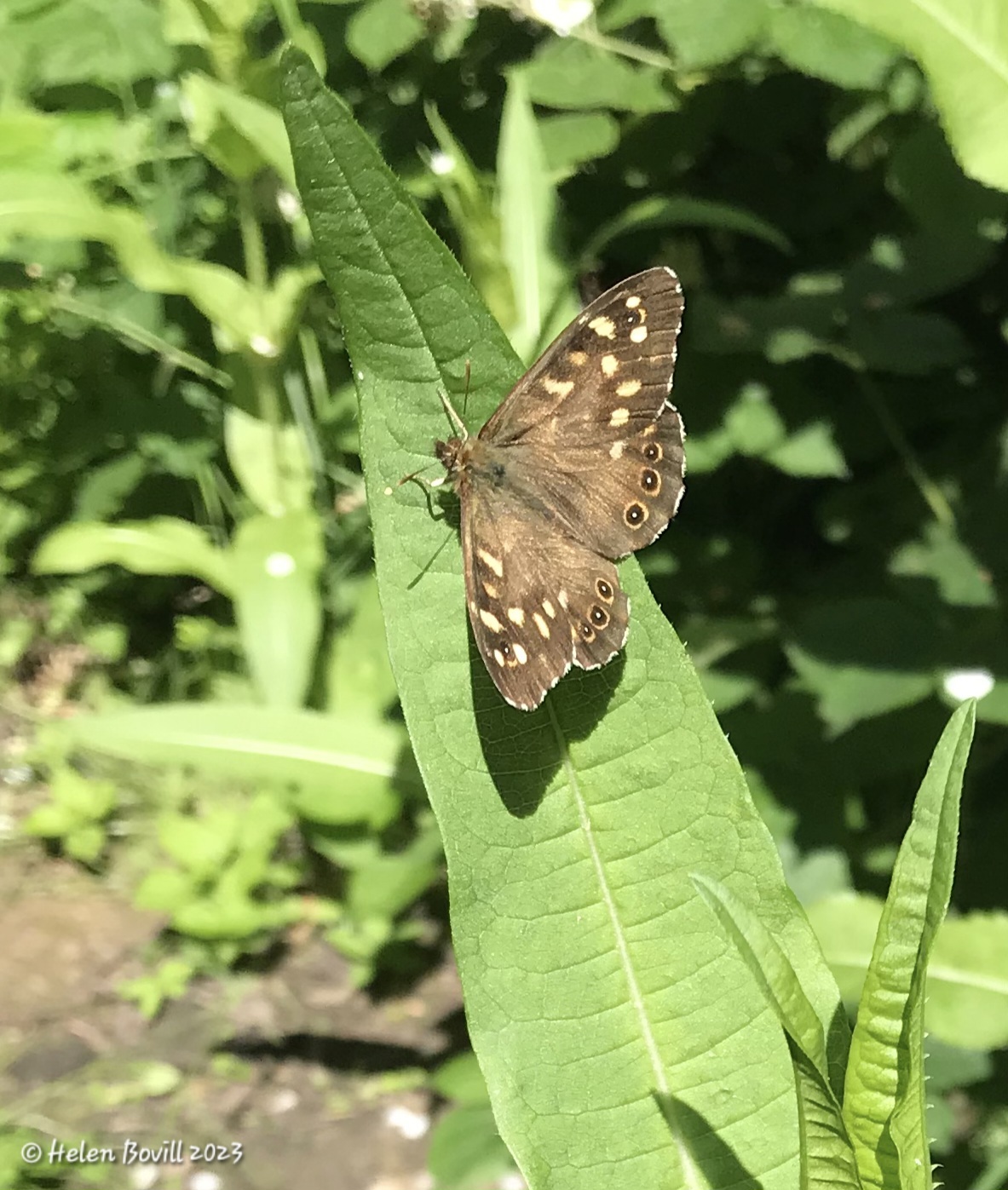
This lack of butterflies is known as the “June gap” because the ones that emerged earlier in the year will have mated, laid their eggs and then died. There is then a period between that and the emergence of the next generation from July onwards. And here is a perfect example of that principle – I found this Large White caterpillar in the same area (possibly even on the same plant) where I saw eggs being laid last month. Here’s my photo from last month’s report –
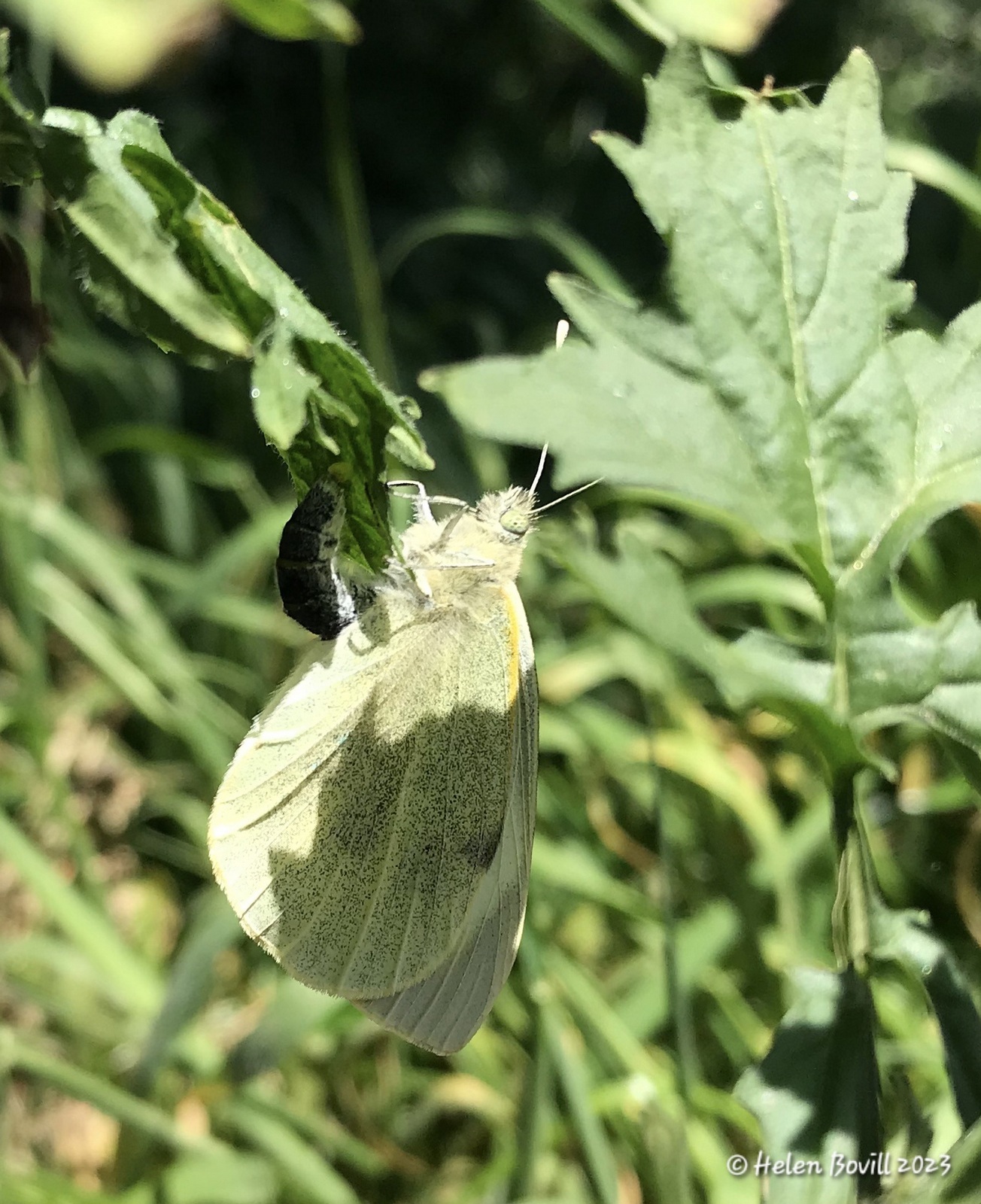
And here’s a caterpillar I found this month –
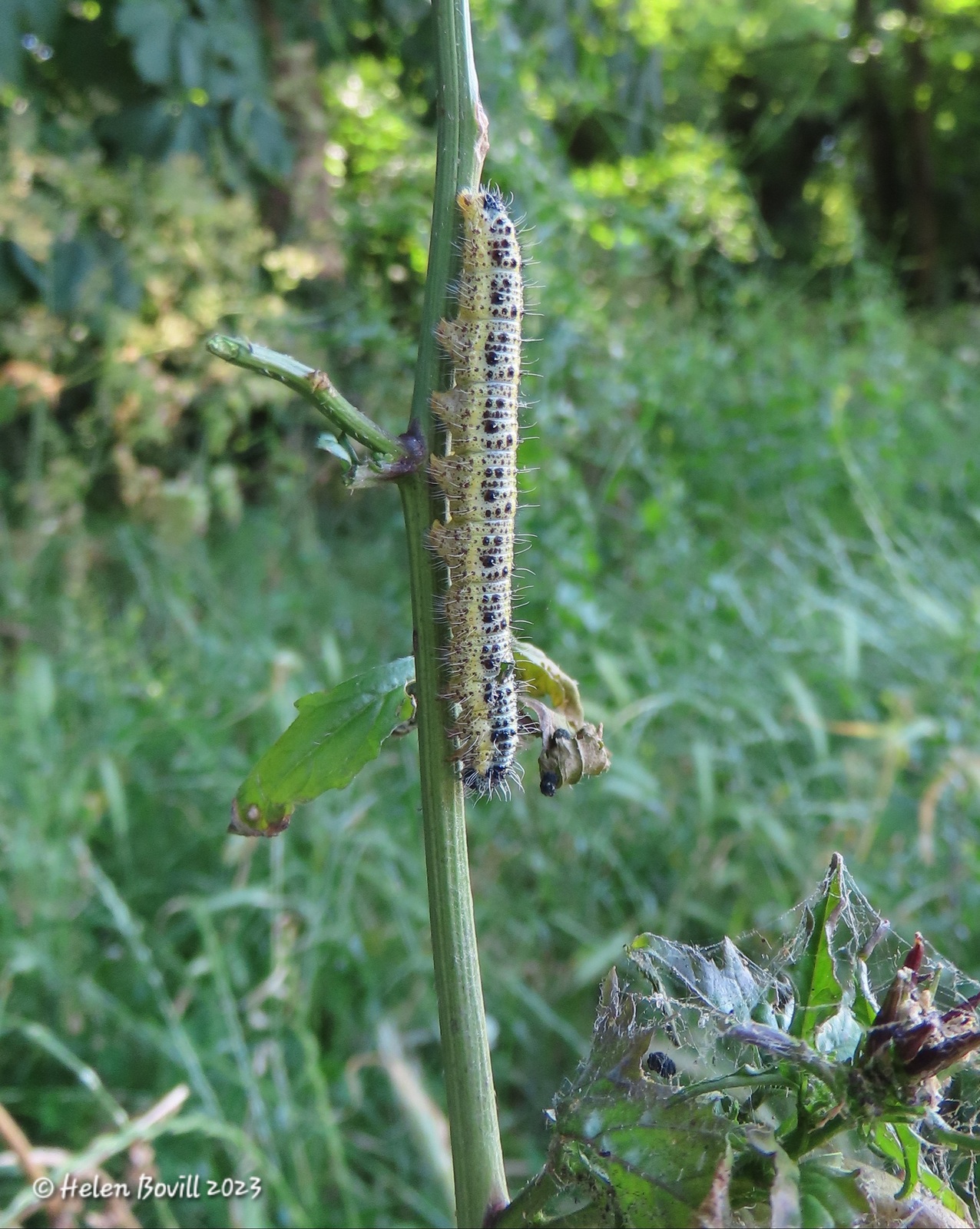
I very rarely notice caterpillars as they are so well camouflaged. This is the final stage or instar of its life as a caterpillar. It seems to have eaten most of the Hedge Mustard plant it’s on and is now making its way down the stem to find a place to pupate. It will emerge as an adult butterfly sometime in July.
Other Insects
However, there were still plenty of other insects around. The best find for me was this – a Thick-Legged Flower Beetle. I’ve seen these before in other locations but never here. This was on the grass verge alongside the cemetery and it’s on an Oxeye Daisy. However, the flower has been nibbled quite extensively by the cemetery wildlife. I saw a few of these beetles throughout the month – this one’s a male. The female is slightly smaller and lacks those thick thighs.
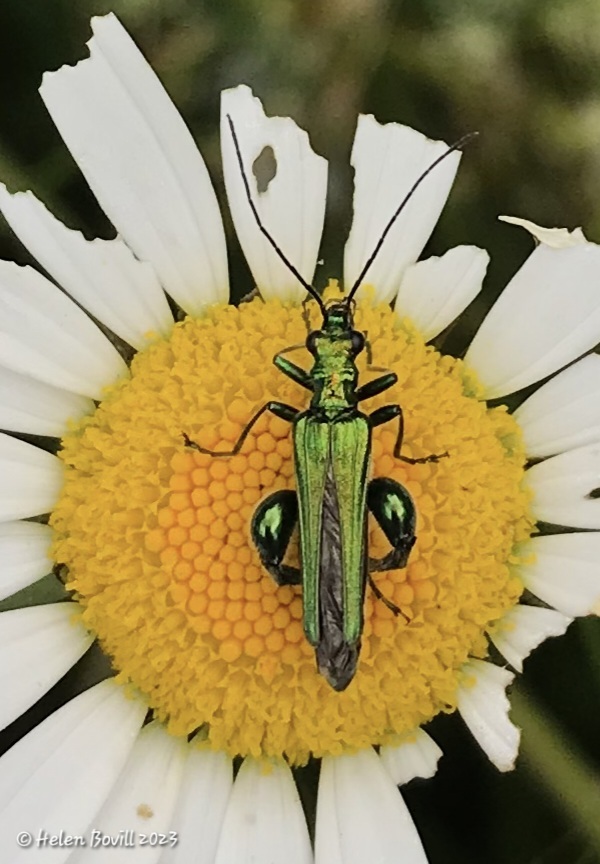
There were lots of Ladybirds at all stages of their life cycle just about everywhere I looked this month. This is a very freshly emerged one with its spots barely visible – they’ll develop over a period of a few hours or so.

There were plenty of Bees of various kinds buzzing around the flowers, and Hoverflies too.
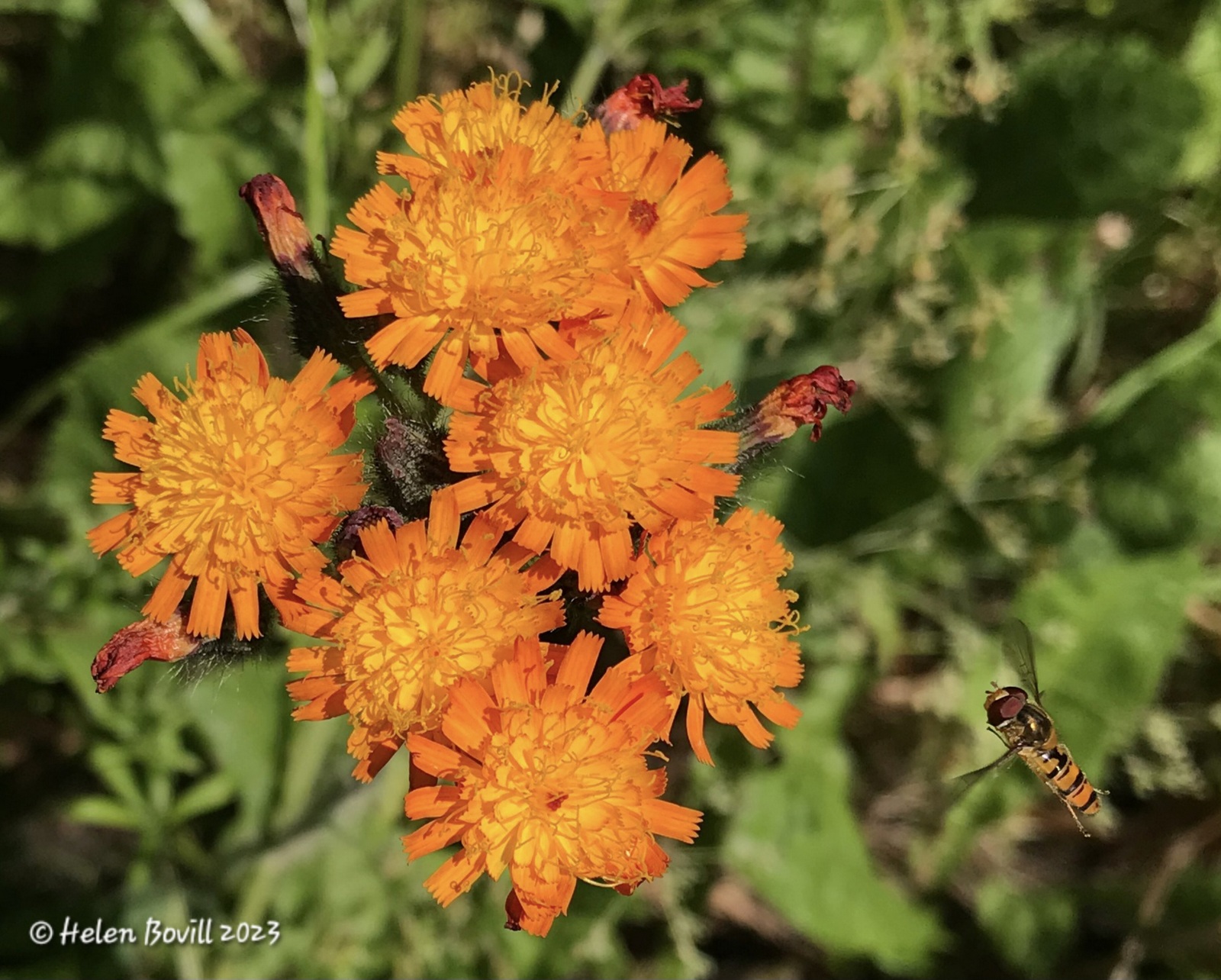
Plants
Native Wildflowers Planted by the Volunteers
The “no mow” grass verge on Spring Bank West on the southern boundary of the cemetery had become rather choked with Cow Parsley and Thistles recently. However, these have now started to die back, allowing some more of the plants set by the volunteers last year to come through and flower. These include some Fox-and-Cubs as shown on the previous photo. They get their name from the flowers being the same colour as a fox, with the dark buds representing the cubs. An alternative name for this plant is Orange Hawkbit.
These wildflower plants, all in keeping with the nature of the site, were provided by Hull City Council and comprised several different types including the Oxeye Daisies already mentioned, Red Campion, Clustered Bellflower, Common Knapweed, White Campion and Musk Mallow. As I’m familiar with the plants that flower along here, it’s easy to spot the new ones that pop up for the first time.
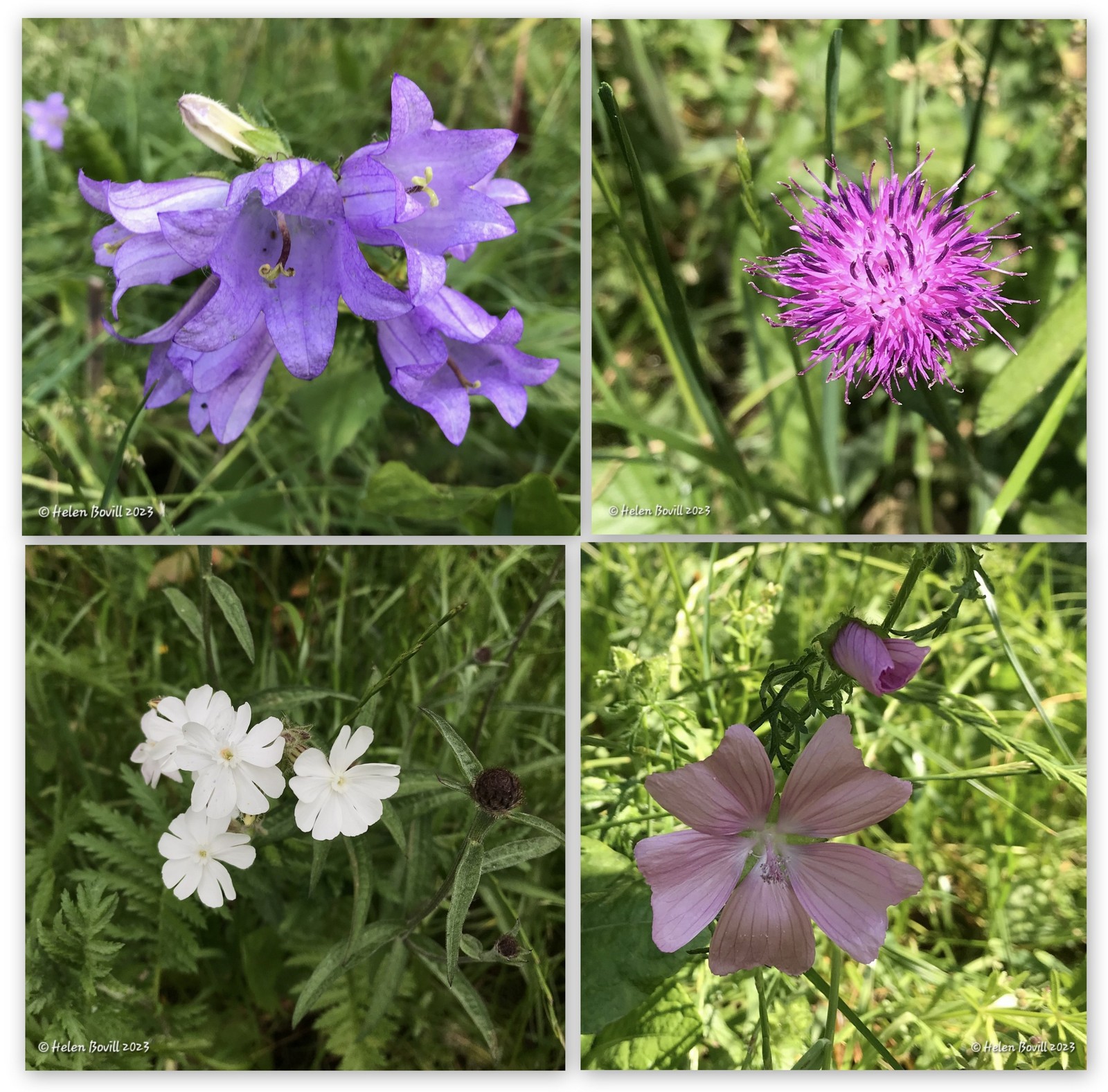
I’m also assuming that another one of the plants we set was this – a Wild Carrot – as I haven’t noticed any here previously. It’s easy to distinguish from Cow Parsley because it has very thin, feathery leaves directly underneath the flower heads. In addition, there is a tiny dark brownish-purple flower right in the middle of the flowerhead, as shown in the close-up.
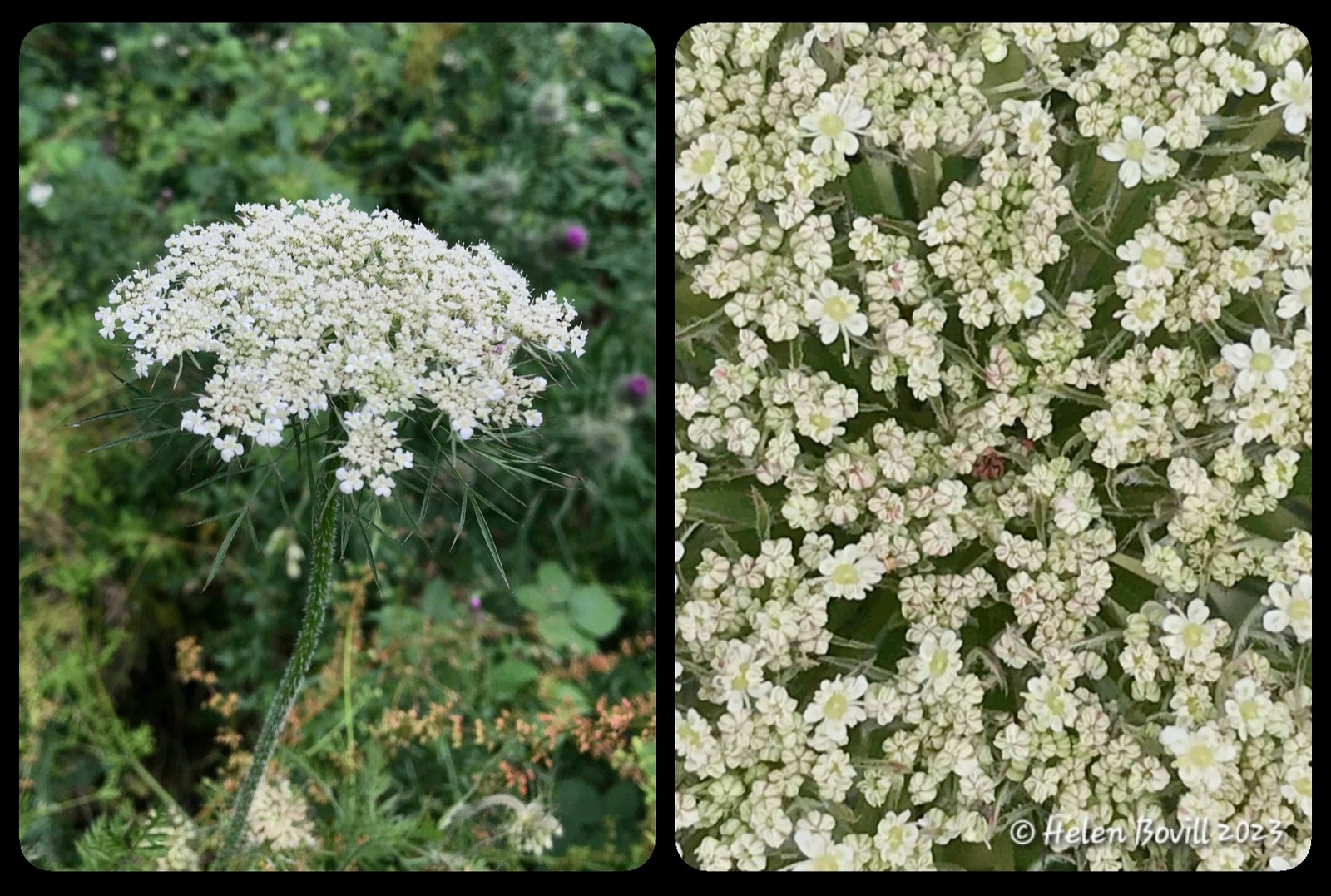
We’ve also planted some Teasels in a couple of locations inside the cemetery. Again, it’s an approved wildflower that’s in keeping with the nature of the site. It’s semi-carnivorous because rainwater is collected at the base of the leaves, trapping and drowning flies and other small insects. The plant thus gets a supply of rainwater, and nutrients from the bodies of the insects. It looks like a Hoverfly of some sort will be providing the nutrients here.
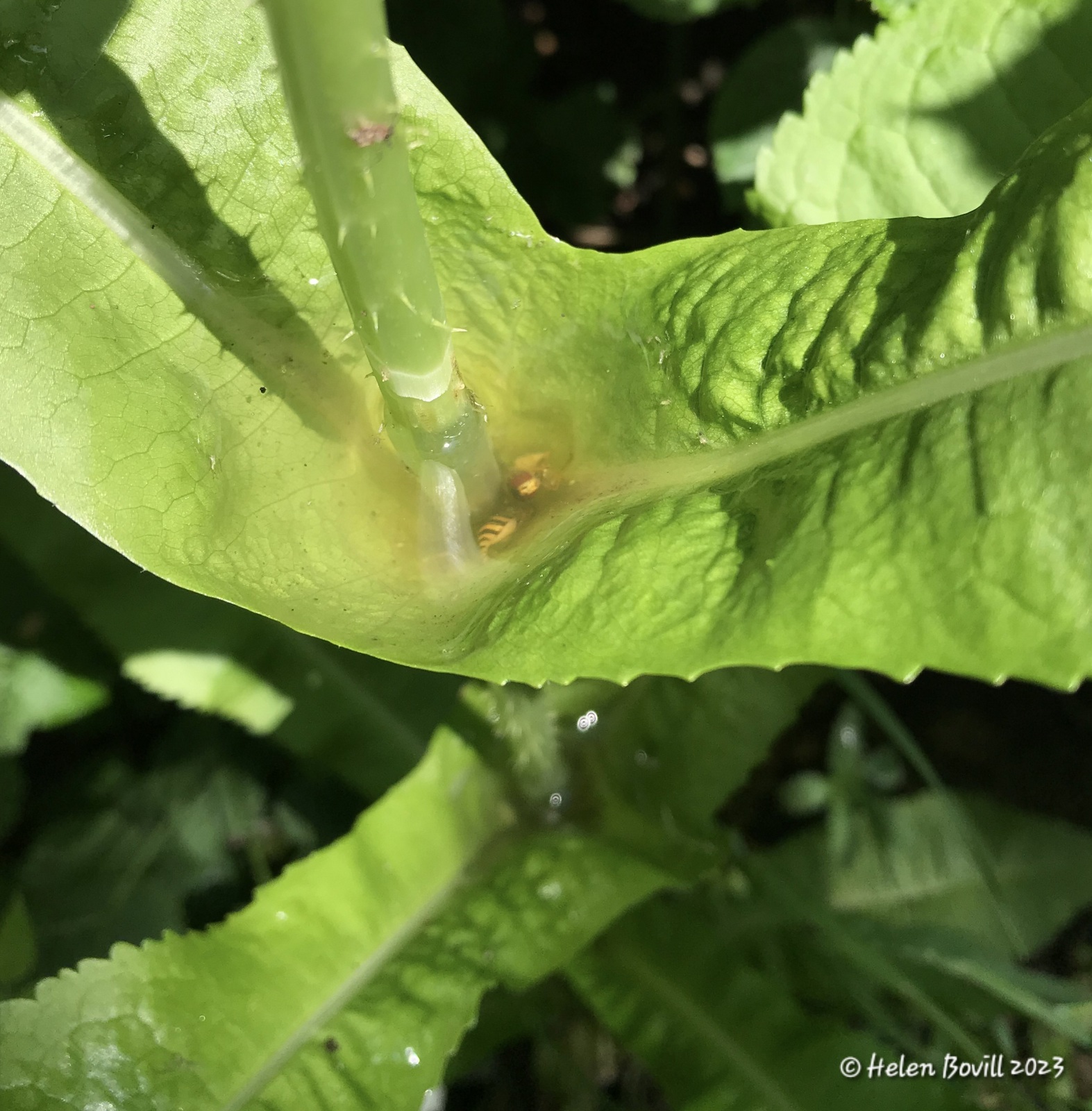
Other Plants
The Meadow Cranesbill growing in the Quaker Burial Ground always looks colourful at this time of the year.

The Astilbe growing inside the Quaker Burial Ground came into flower earlier in June. Whilst not a wild plant, it’s been growing here for many years and deserves a mention because its delicate flowery fronds provide a good source of nectar for the tiny branch of the cemetery wildlife.
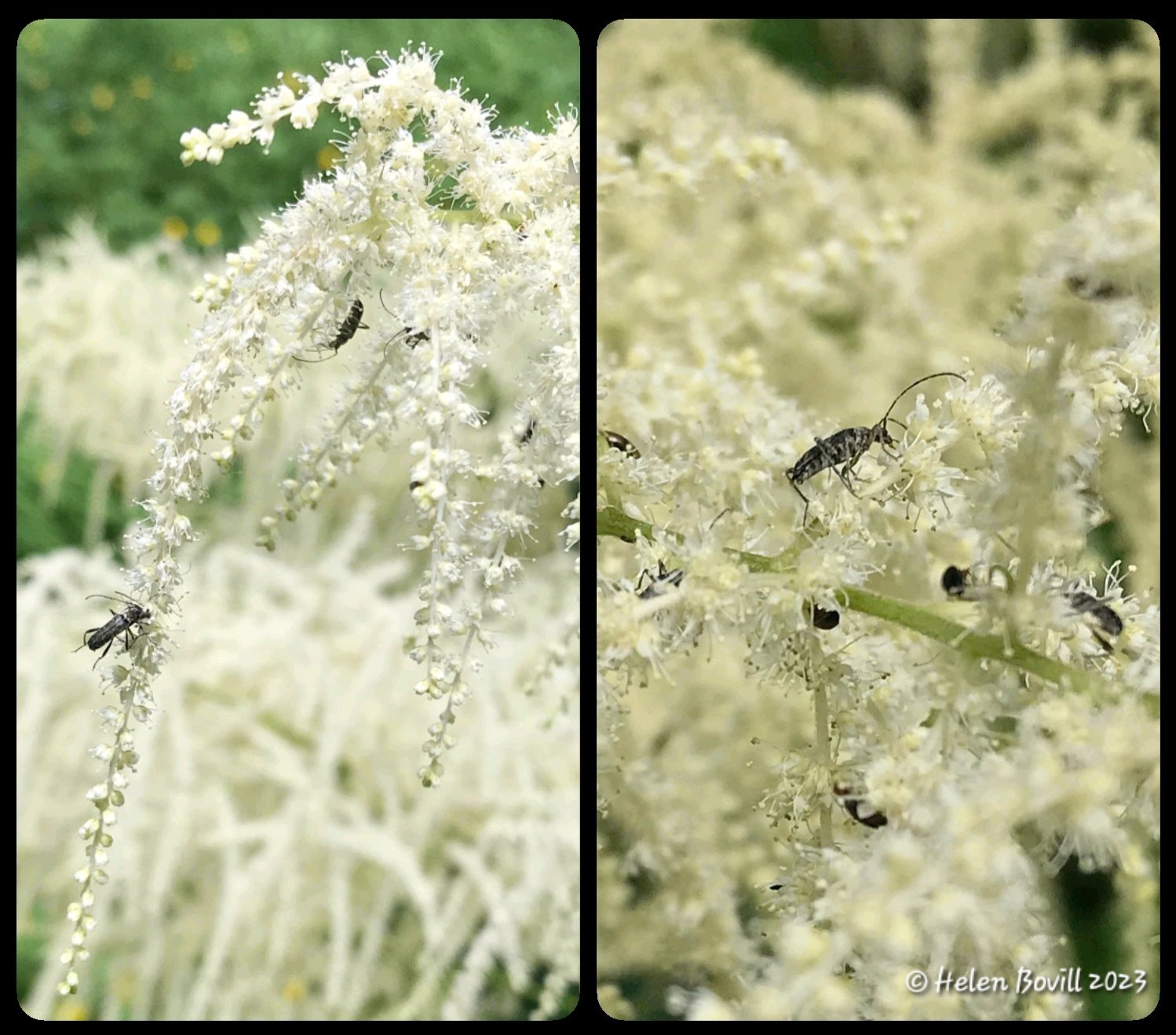 Astilbe
AstilbeElsewhere in the cemetery I found this Red Valerian. Some areas inside the cemetery are looking a bit tired as the spring plants start to wilt and die, so this added some welcome colour.
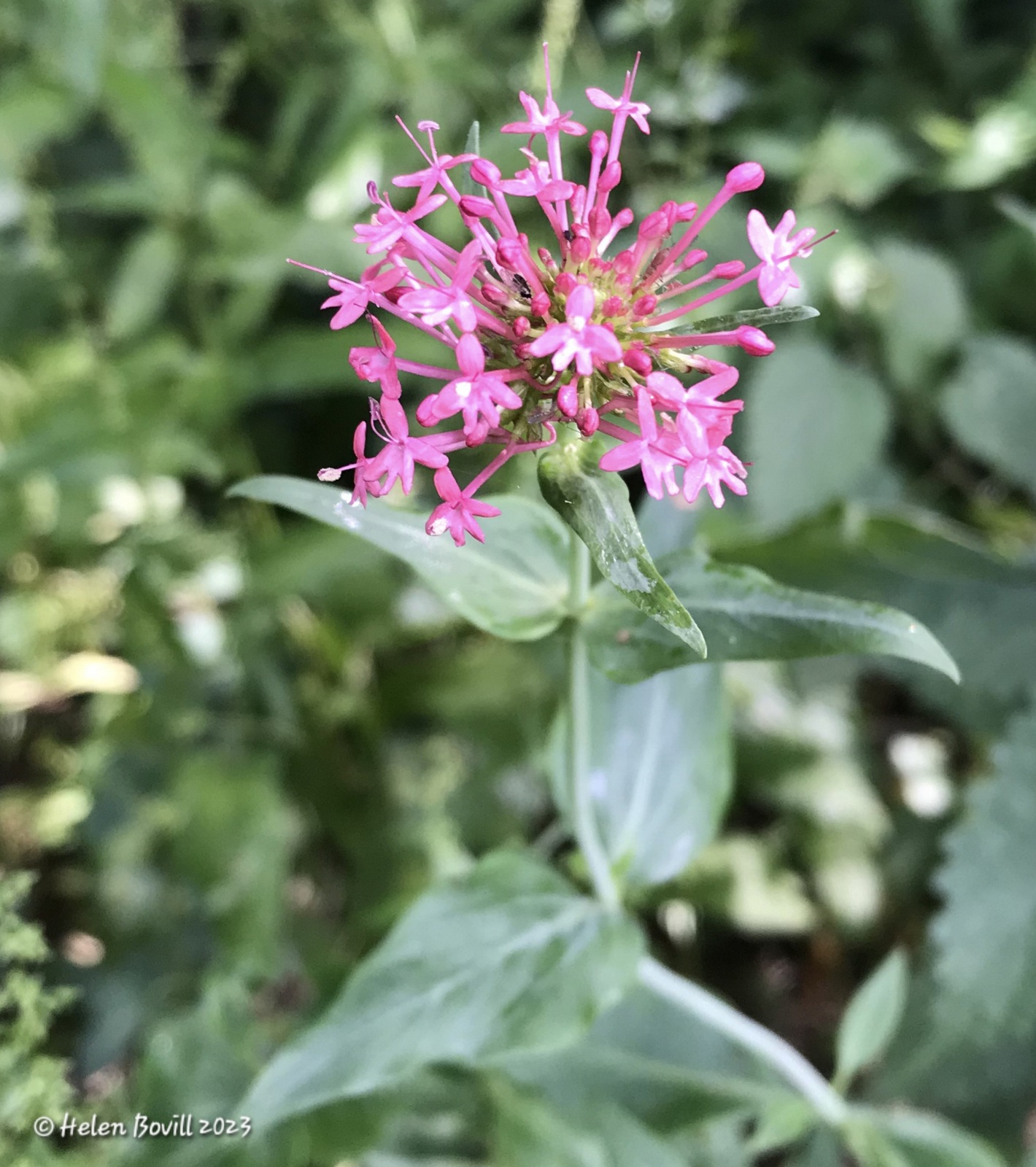
The leaves on all the trees are now fully open and most of them have finished flowering. However, one of the last trees to flower is the Common Lime.
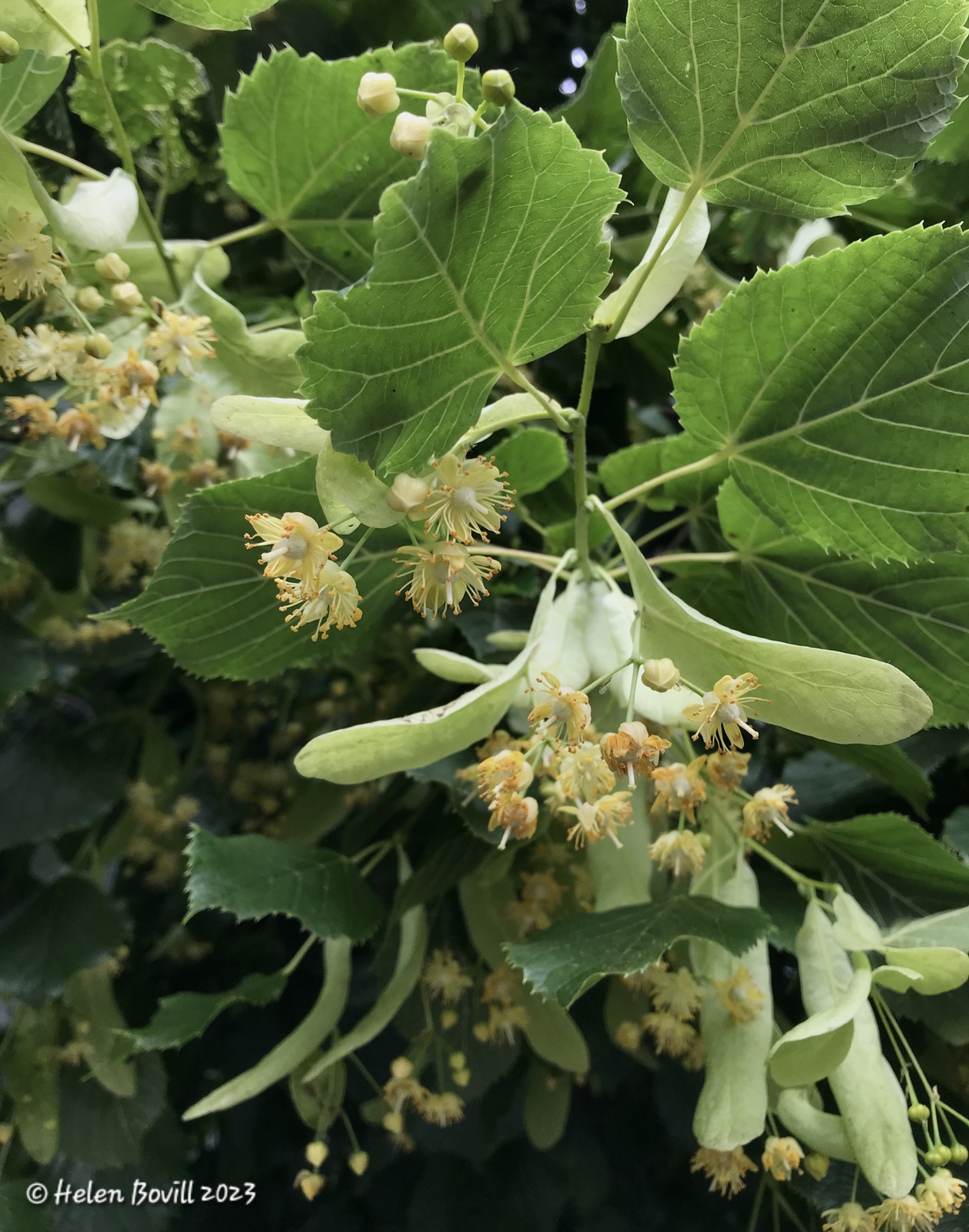
Conclusion
June has been a good month in the cemetery for both wildlife and humans alike. There generally aren’t enough mammals in either numbers or variety of species to warrant a heading of their own, but as I always see at least one or two Squirrels whenever I visit the cemetery I shall end this report, and possibly all future reports, with a “Squirrel of the month”. This time it takes the form of an engraving on the Blundell monument, recently restored by the volunteers and looking rather elegant in the morning sunshine!




Another great report Helen, really enjoyed reading it.
What pleasure to see such a wide range of flowers and wildlife; beautifully photographed too. Thank you.
fabulous Helen’ xxx
What an enjoyable read! I never knew that about Teasle. Or about the Butterflies. Thankyou Helen for bringing this beautiful place to life even more with your knowledge and wonderful photos.